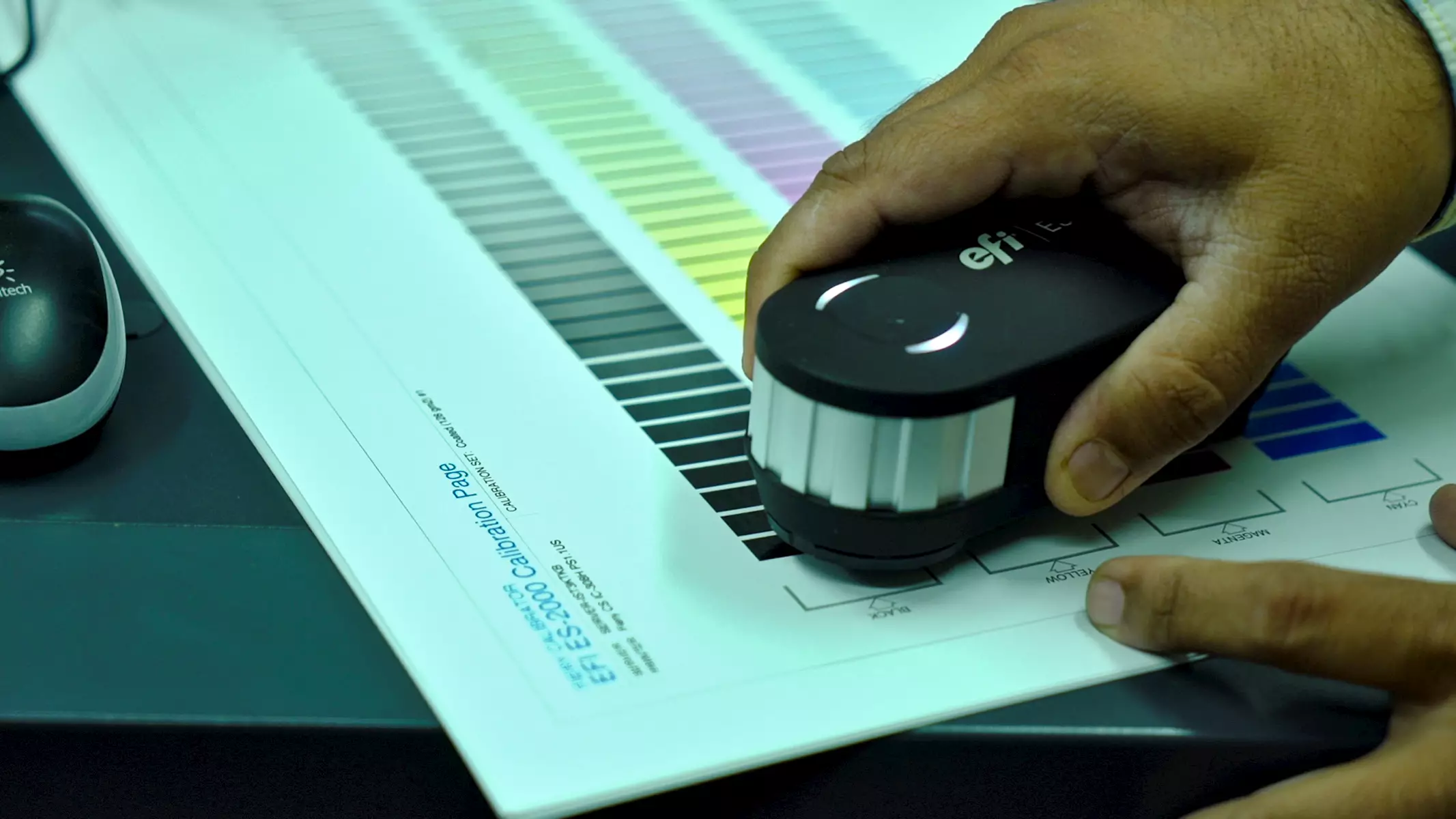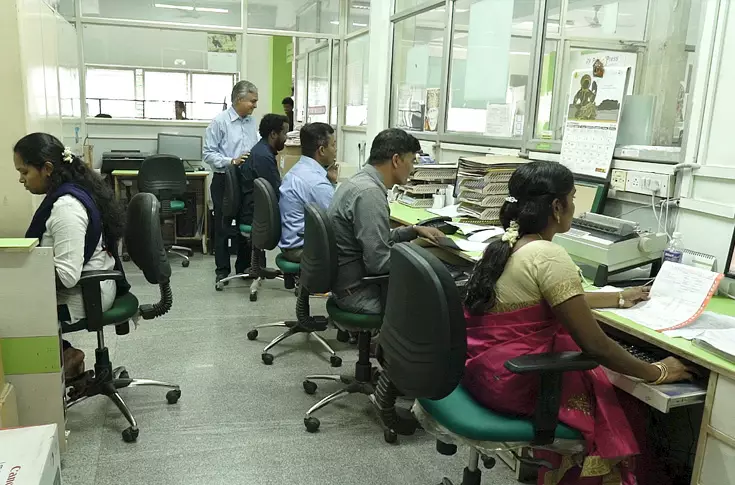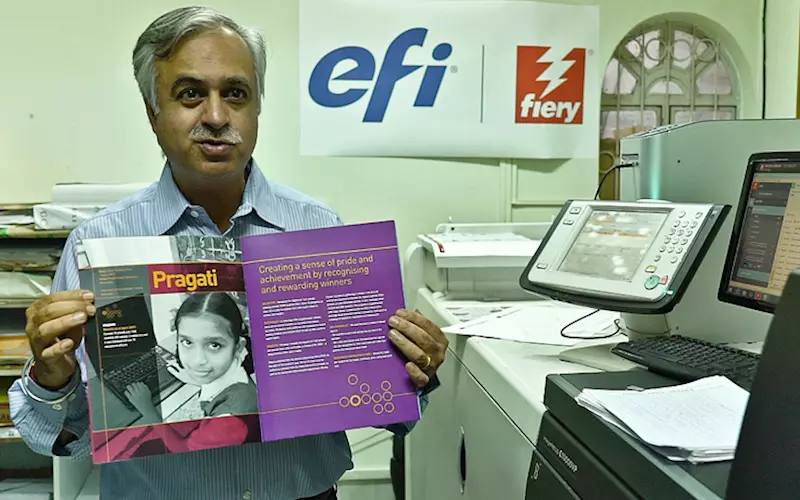Customers of Bengaluru-based PrintXpress get the best of both worlds
Jagdish Bajaj of PrintXpress in Bengaluru says, “We do tell the customers to check the print properly once a sample has been printed by us. Generally we try to minimise the mistakes at the inception level itself. We communicate a lot with the operators. Owning up to their mistakes is a remedy because there are less chances of a mistake getting repeated. Plus it boosts their confidence on the next job that they do rather than diminishing the confidence. Unfortunately in India, we follow the culture of hiding the mistakes which is what we at PrintXpress endeavour to change. Having said that we do have a system in place where there is a minimum penalty if something goes wrong. There is a responsibility attached to everything.”
30 May 2019 | By PrintWeek India
This is where EFI has played a significant role.
Be it: Quicker turnaround. Bajaj explains, “The impact of this higher output speed is that our customers have a very short wait for their job. In addition, the Fiery keeps a job log of the entire history of jobs. A PrintXpress operator has access to all the jobs and can see the entire list of jobs. The Fiery has a feature where the operator can take a job and put it in the job queue. That way an important, urgent job can be printed quickly. All these tiny things make the customer more confident.”
The PrintXpress parable
Jagdish Bajaj was born in January 1966. A year later, his father Rajaram M Bajaj moved to Bengaluru from Delhi to establish a division of the family’s liquor business. It was decades later - in 2002 - that PrintXpress was born.
Bajaj explains, “We were in the photocopying business from 1990. We needed to get into printing. So I moved from manufacturing to photocopying and printing. First, we installed a colour printer from Xerox which was called DC4LP. Then we had the Canon CLC copier machine, wide-format colour printer from HP and a black-and-white wide format printer from Xerox. So the genesis of digital printing had been laid down in our minds right at that time. And then in about 1995-97 we installed a DC12 machine from Xerox. Gradually, we upgraded to two more DC12 machines from Xerox. Economically everything started falling into place and as the print volumes increased we opted for then advanced Xerox 6060 and the name PrintXpress was coined for our printing business in 2002 at Koramangala in Bengaluru. This was a unit of Gurubal Engineering Company. A year later we opened a branch at Richmond Road under the name of GP Solutions which was the second company. Both the companies came under PrintXpress. Today we have our presence in Koramangala, Richmond Road, Indira Nagar, Hosur-Sarjapur Road Layout (HSR Layout) and one unit at Kamaraj Road.

EFI and the daily regime
PrintXpress has a robust mechanism which is ensuring that things transpire regularly on a daily basis. We asked Bajaj what is the process? He says, “To begin with, we spend a lot of time with our people on the shopfloor. And then the robust mechanism – that you speak of – is based on putting that extra effort with our staff in order to get the job completed. We have always been open in teaching the staff about the customer expectations. All our working style and training is built on the backbone of customer expectations.”
Bajaj has an engineering background and therefore he was keen to be ISO certified. He says, “The Kaizen model and Six Sigma training helps to ensure that everyone in the team knows what is expected from them.” He adds, “At the time when we were gaining momentum, a lot of McDonald’s outlets were being set up in Bengaluru. At the same time there were a lot of industry events going on about a franchisee for food, education and laundry sectors. We visited these events and thought to apply the franchisee model for PrintXpress.”
It was the EFI which joined the dotted lines. How so, we asked. Bajaj says, “In a business where every minute counts towards profitability, the EFI Fiery servers provide the highest level of performance, colour quality, automation and usability, making it easy for print service providers to deliver the applications their customers need.”

The EFI partnership
We asked Jagdish Bajaj about the PrintXpress relationship with EFI. And why EFI?
He says, “An EFI text and graphics tool lets users print sharp, fine details, small-font-size text and ultra-thin lines with clarity. Plus the new DFEs provide the essential tools to make the hardware more productive.”
Then he adds, “We have six factories and we realised that in order to have a franchisee model we will need a training centre, so that the standards can be replicated at any of the franchisee centres when in need. For example, today, colour management has improved because of the data exchange between a digital press and the EFI Fiery. Presses have online densitometers which send data in real-time. So, the number of times you need to calibrate a job is reduced. Also, the operator is very confident about how to handle the job since the communication between his computer and the printer is hundred times more productive.
One huge reason for reliability, efficiency and quality is a dedicated workflow line from EFI that ensures the hardware is talking to each other. Bajaj says, “There is a system in place which is still being developed. It generates various reports and a lot of effort is being put into it to make it more robust.“
The colour conundrum
We ask Jagdish Bajaj how important is the colour management in digital print as comparable to offset printing especially in the day to day operations? Plus - what is the role of colour management on the Canon 10000 - particularly with the EFI Fiery?
Bajaj says, “The colour management has improved because of the communication between the both of them. They have online densitometers which are sending data back faster. So, the number of times you need to calibrate is reduced. So, the operator is also very confident that it will handle the job.”
He feels, the tools enable users to make colour adjustments as well as makeready and automation enhancements to improve workflow efficiency and give PrintXpress clients the “highest level of creative capabilities.”

EFI and synergy at PrintXpress
Bajaj feels there is scope for improvement in efficiency. He says, “Turnaround, downtime, manpower and wastage needs to be looked at. Everything needs to be fairly measurable to be in tune with the market and the service that we provide. Even the amount of time from the moment a print-ready file enters our system to the final output needs to be measured.”
In what way, we ask Bajaj. He replies, “Today the processor is much faster, so the job submission is quicker. Secondly, output speed is very fast in the newer machines. Today, 55 pages are being printed per minute. Earlier the same job was done at 16 pages per minute. Today there is a time reduction of 2.5 times. So, if there was a print job of 100 prints, within two minutes all the prints are done. Now, by the time, the customer gives the confirmation to my reception desk, the operator has the paper ready in two minutes. Customers are taken aback as to how the entire job is done so quickly. But all these things need to be calculated and measured.
We ask Bajaj his final take on EFI. He replies: More synergy, more co-ordination, and leveraging all the strengths at PrintXpress.














 See All
See All